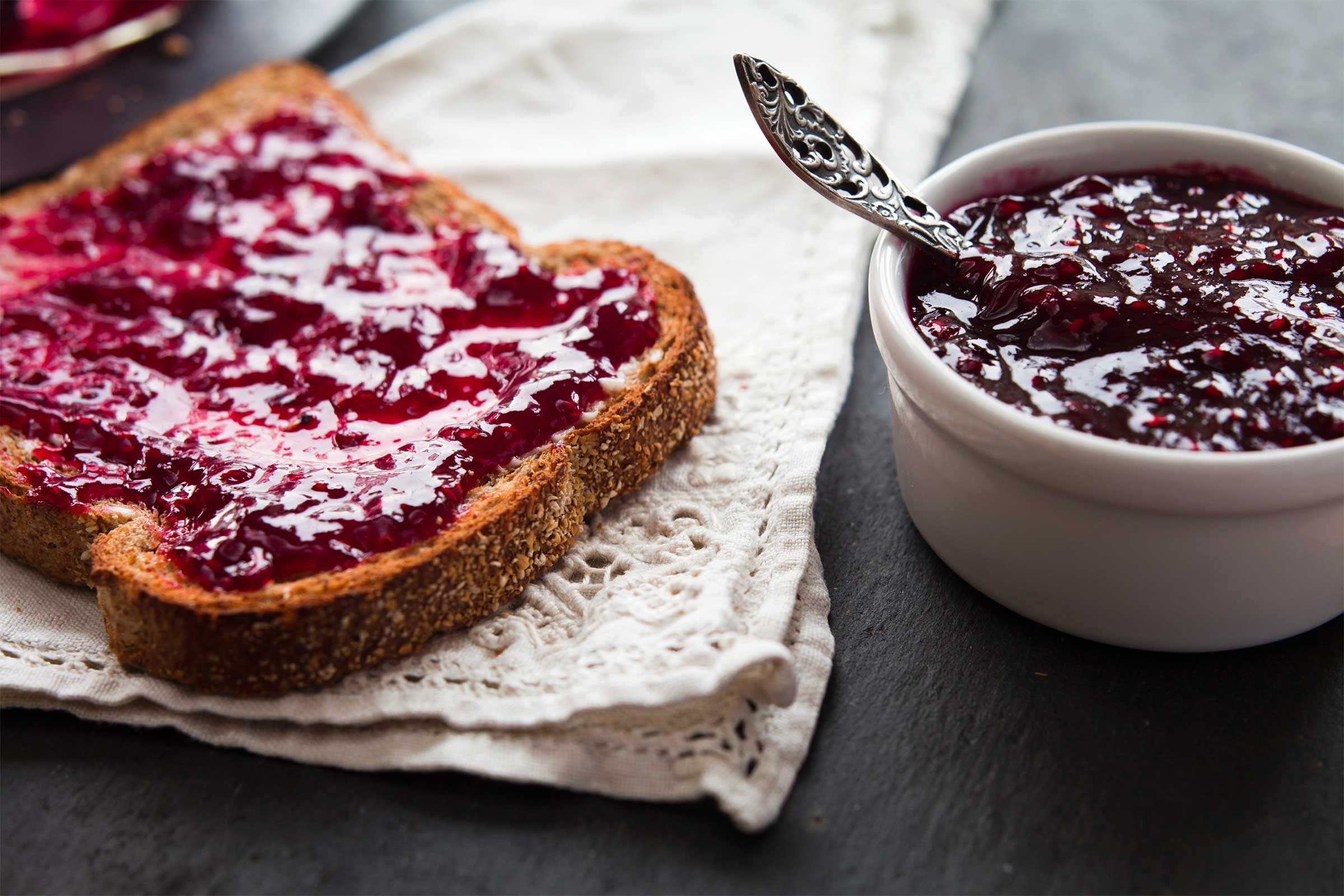
Toast with jelly
Carbo-loading at your morning meal, especially if you choose white, refined grains, will cause blood sugar to spike and dip. “Low blood sugar after a meal can easily cause hunger,” says Raleigh, North Carolina-based registered dietitian Laura Schoenfeld. Even if you opt for whole-wheat toast, you still need to pair it with protein or fat to slow its digestion. Aim to eat three ounces of protein at breakfast. Good sources are eggs, chicken sausage, smoked fish, or a little turkey bacon. Or try some of these high-protein breakfast ideas.
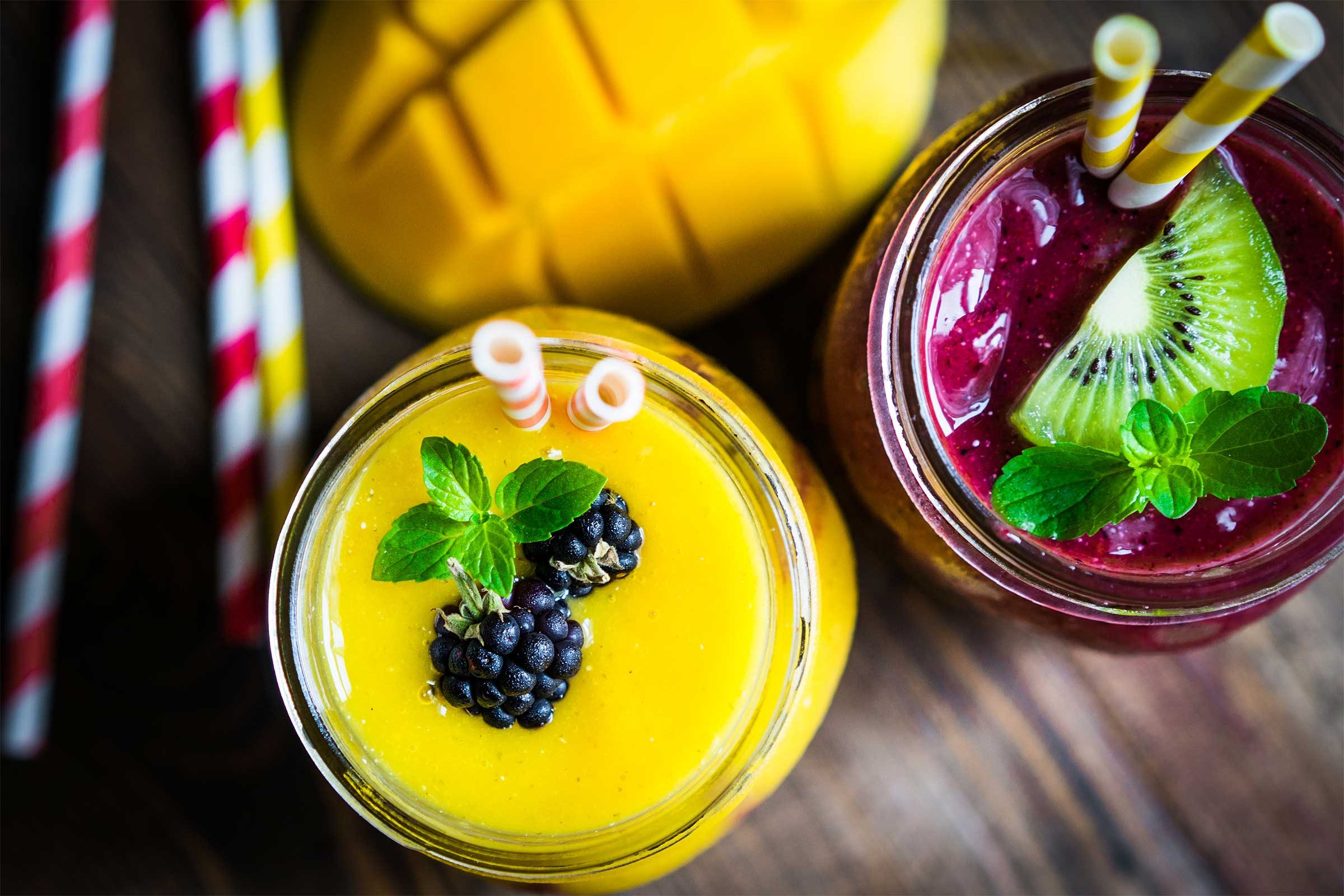
Smoothies
Done right, breakfast smoothies can be filling and nutritious. However, many smoothies are high in sugar—from flavored yogurts, fruit, and fruit juices, not to mention fro-yo or sherbet, and low in satiating protein and fat, notes Schoenfeld. The key to a smoothie that lasts till lunch is to add protein (try protein powders made from peas or quinoa) and fat (nut butter, avocado, coconut oil, or milk) for staying power. These healthy smoothie recipes can help start your day right. These are signs you’re eating too much sugar.
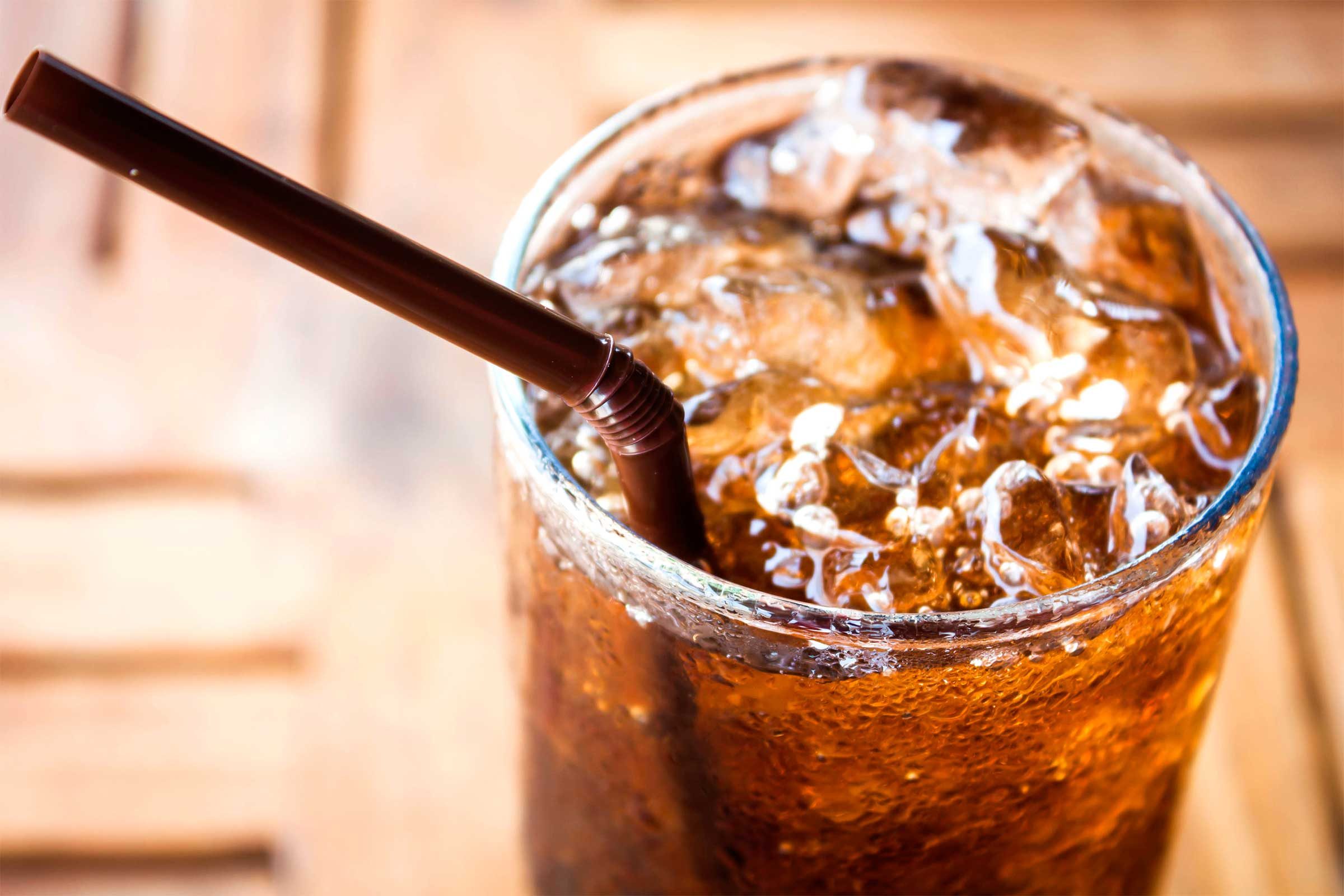
Diet soda
Ever rely on diet cola to perk you up from a midday slump? It feels harmless because it contains zero calories, but the strategy may backfire. “The research on artificial sweeteners and hunger isn’t straightforward,” says registered dietitian nutritionist Marisa Moore. However, “it does appear that getting artificial sweeteners from food and drinks, like chewing gum and zero calorie beverages, may impact appetite,” she says. If you’re going to have that diet drink, pair it with a real snack, like nuts and dried fruit, to help keep hunger on an even keel. Here’s what happens to your body if you stop drinking diet soda.
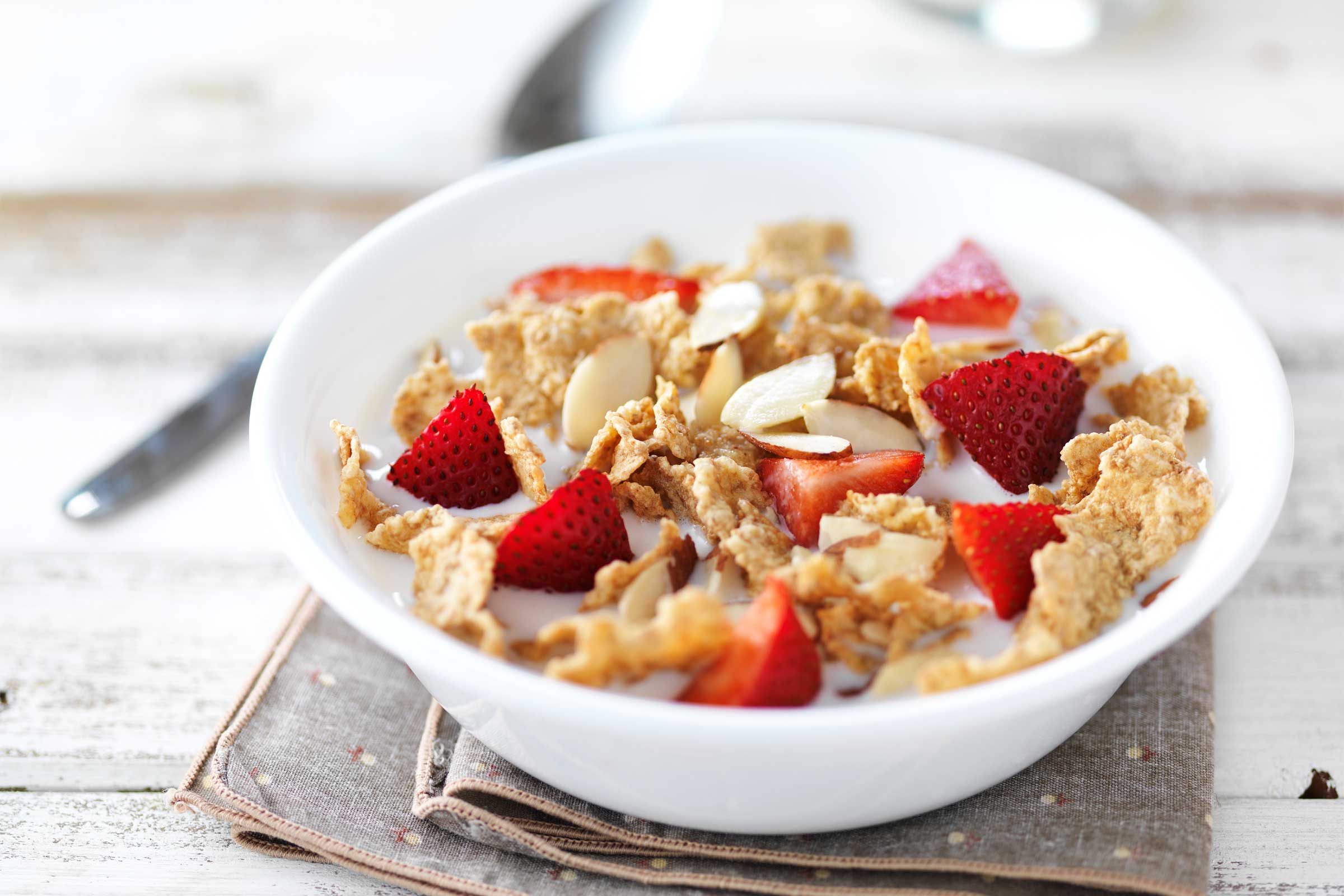
Cereal
Cereal is a classic American breakfast, but it’s also a bowl of carbs that will send your blood sugar on a wacky roller coaster ride. Instead, go for oatmeal, which is also technically carbs, but ones that are digested more slowly. In a study from Louisiana State University comparing the two, an oatmeal breakfast with the same calories as a breakfast of cold cereal led to greater fullness and less of a desire to eat later. Oats come out on top because they contain more fiber and protein but less sugar, researchers say. Check out the tasty, healthy oatmeal toppers you’ve never thought to try. Are you a huge cereal fan? Find out if you’re a cereal expert with this quiz.
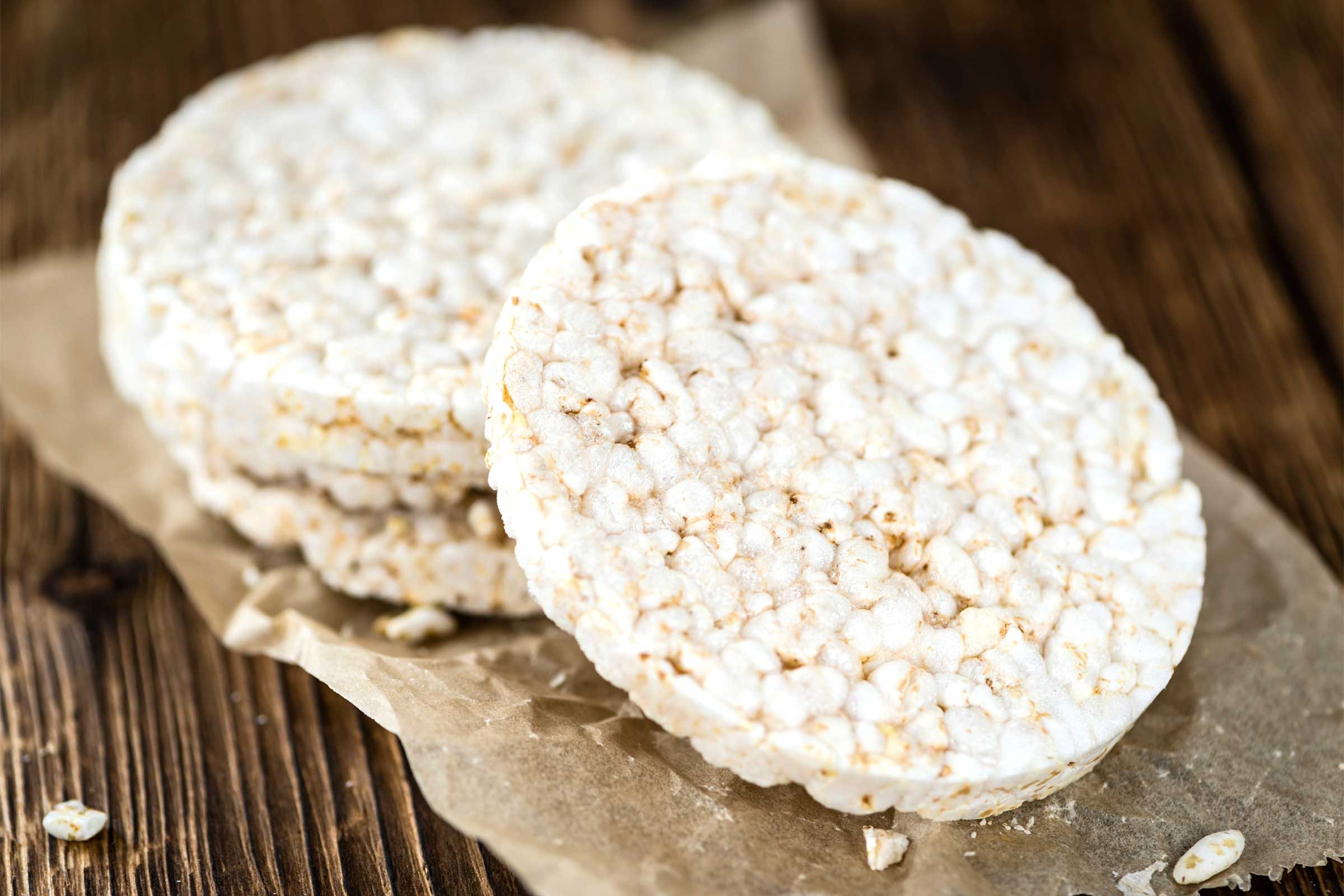
Rice cakes
This is one food that people commonly think will fill them up, but never really does. “Rice cakes are literally full of air,” Moore says, which is why they’re so not satisfying on their own. Feel free to crunch on these versatile rounds, just make sure to top them with a protein or fat—try nut butter, cheese, or avocado—for a snack that will see you through. Check out these other foods you think are healthy but kind of aren’t.
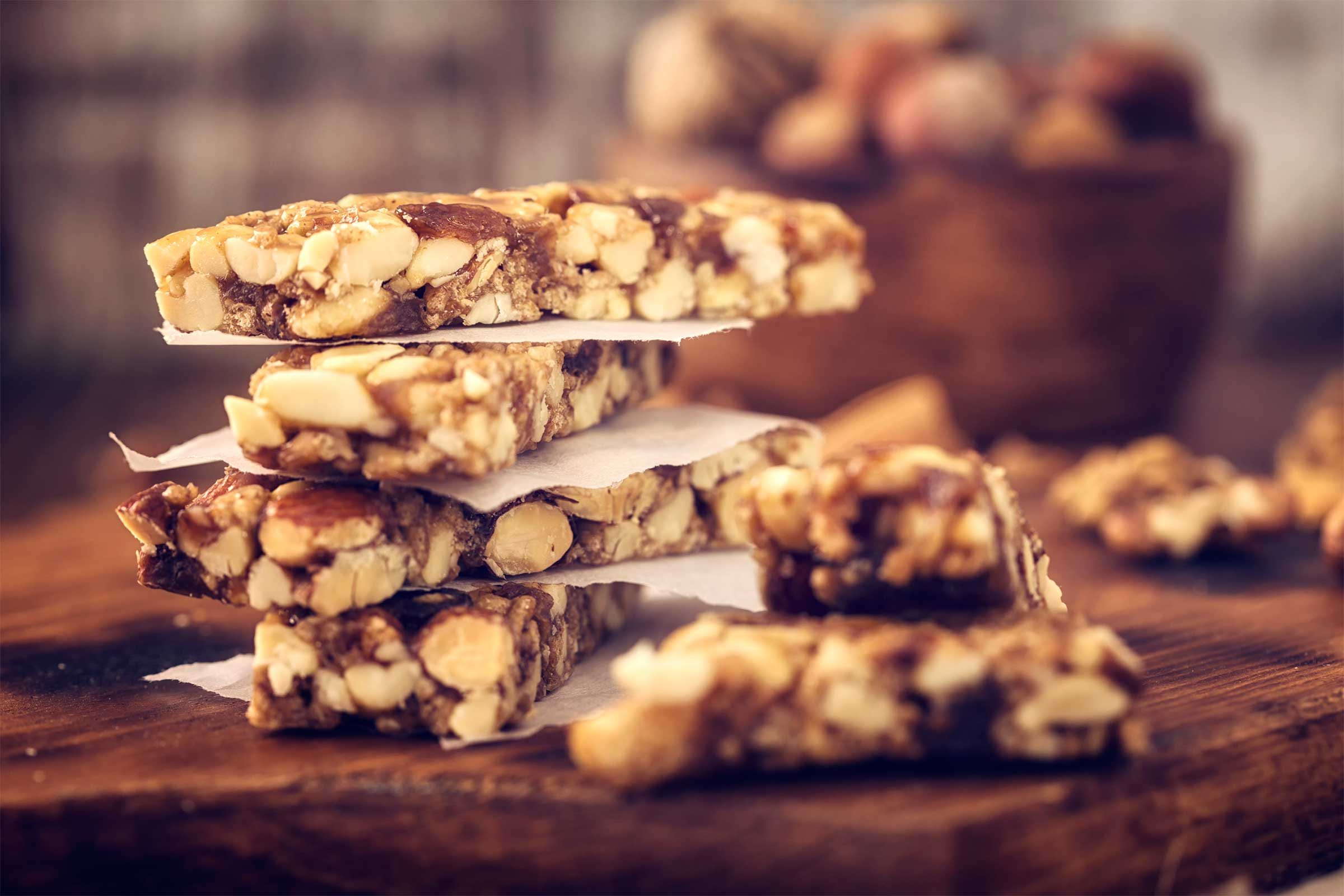
Granola bars
Granola bars have two things working against them—they’re usually high in sugar and low in protein and fiber. So post-nosh, you’ll likely be looking for another snack. “Aim to get at least 10 grams of protein in a snack if possible,” Schoenfeld says. Some good options: a container of Greek yogurt (20 grams of protein); a half-cup of cottage cheese (12 grams of protein), or two hard-boiled eggs (12 grams of protein). Here’s how to eat more protein without even trying.
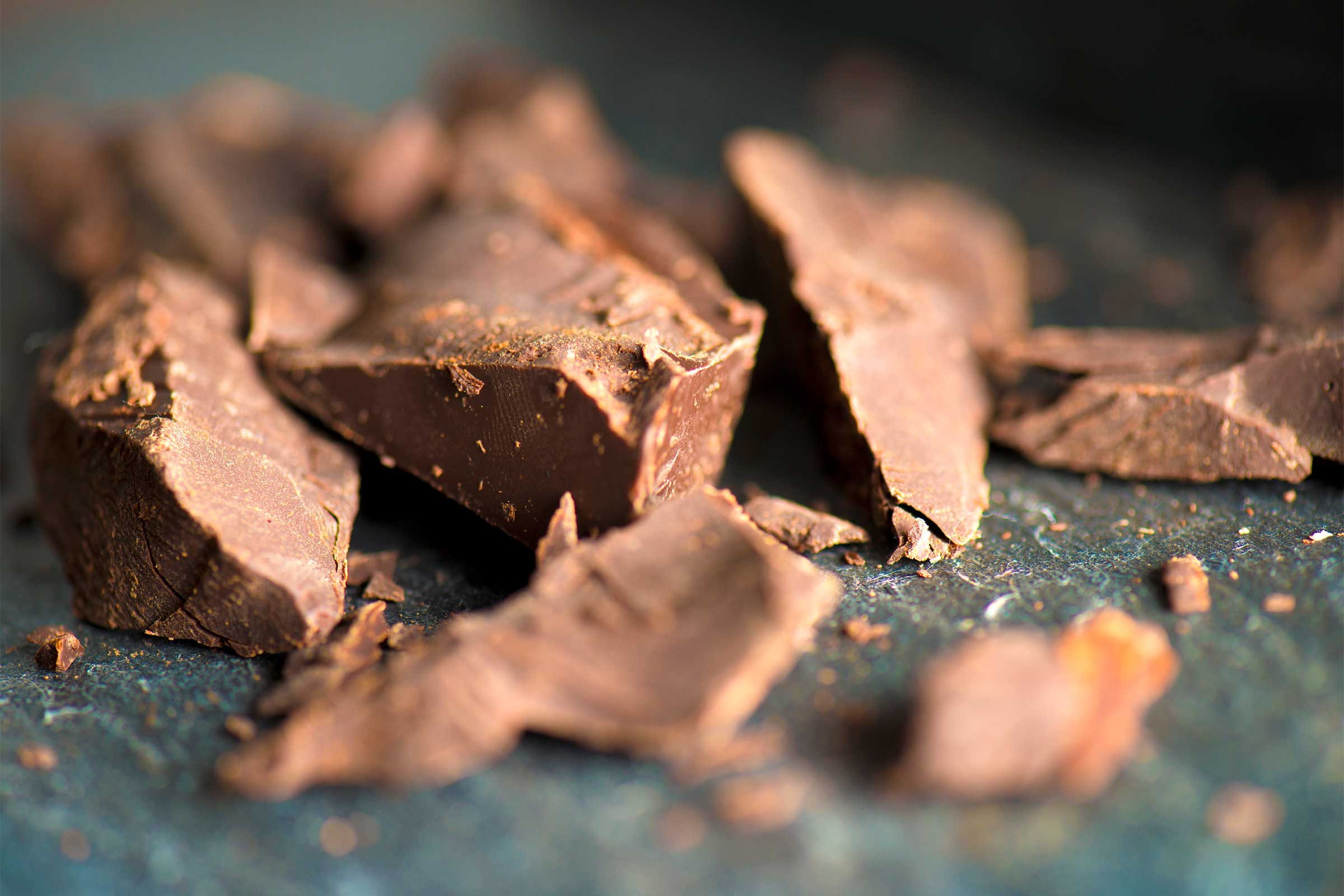
Milk chocolate
Chocolate is good for you, right? Actually, it depends on the variety. Milk chocolate, though it contains some healthful antioxidants called polyphenols from the cocoa butter, is mostly sugar. An ounce and a half can pack in 22 grams—the equivalent of nearly six teaspoons of the sweet stuff. Snack on milk chocolate and the sugar will hike your cravings for more sugar, tempting you to seek out more sweets. The wiser choice is dark chocolate, which is lower in sugar and actually somewhat filling. A study in the journal Nutrients found that eating 70 percent dark chocolate in the morning boosted satiety, so people consumed about 175 fewer calories at lunch compared to a group that ate milk chocolate. Dark chocolate is one of a handful of energy-boosting foods.
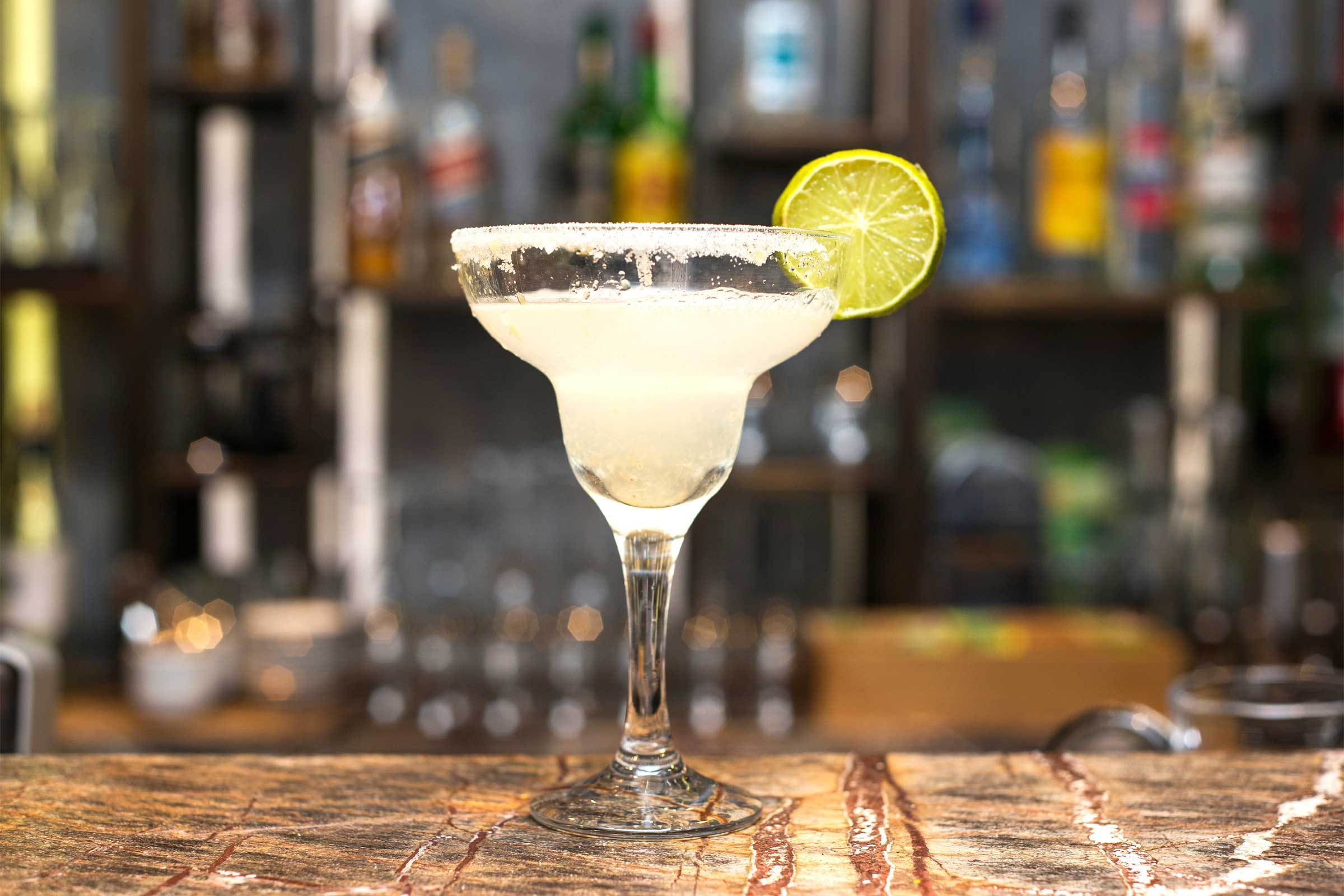
Margarita
An alcoholic drink is just going to goose your appetite—for fries and a burger, according to a 2013 study in the American Journal of Clinical Nutrition. Researchers discovered that although women didn’t consume more calories on days they drank booze, their diets were worse—they ate more fatty foods. With less of a guard up, the chips and queso are hard to resist. A margarita is a particularly big offender: Drinking two is the equivalent of nearly three and a half drinks, and it’s also higher in sugar and salt than most alcoholic beverages, so it can further stoke appetite.
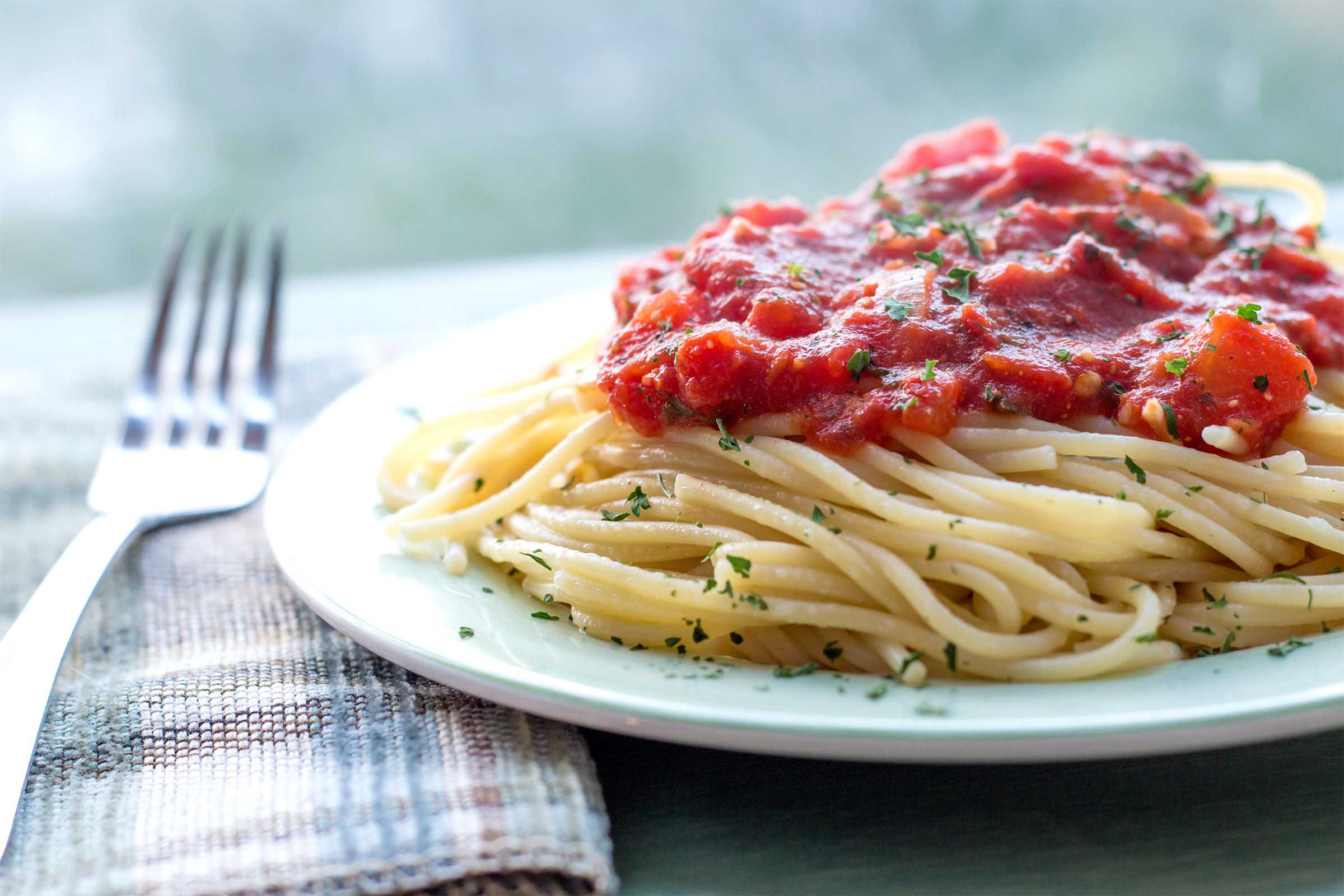
A pasta dinner
The heaping bowl of noodles is a heaping bowl of blood sugar-spiking carbs. Try swapping regular pasta for the whole grain kind—or try varieties made from chickpea flour, both of which contains more filling fiber. They won’t help you eat less (or help you cut calories during the rest of the day), but they will keep you fuller in between meals, according to 2016 research in the journal Appetite. To make a pasta meal last longer, pile on cooked fresh vegetables to get more fiber, and add some lean protein, like turkey meatballs or white beans.
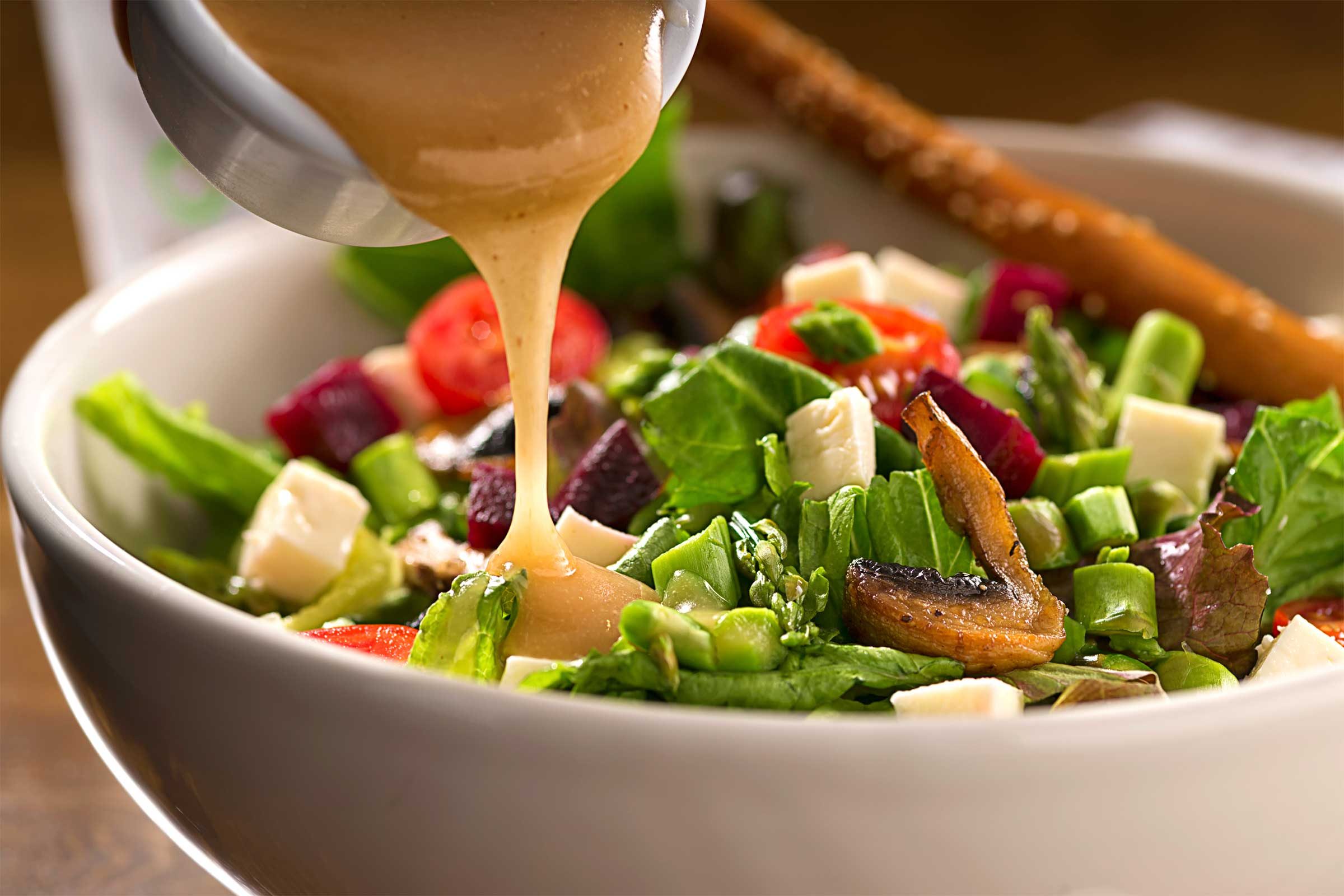
Fat-free salad dressing
Your salad doesn’t have to be sad—just go for the full fat. “Healthy fats like olive oil not only pump up the satiety factor, but they also help you absorb more nutrients like beta carotene from salad greens, carrots, and red peppers,” Moore says. Plus, it tastes better—and yummy food makes you feel more satisfied, so you’re less likely to feel deprived and dip into the pint of ice cream you have chilling in your freezer. These science-backed foods can keep you full all day long.
